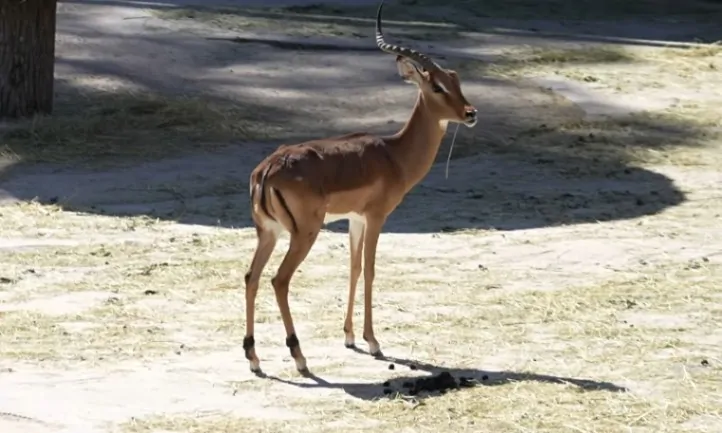Mysterious stone circles scattered across the Sahara Desert and surrounding regions have baffled researchers for decades.
Found in places like Western Sahara and Northwest Arabia, these formations often feature complex geometries with no clear historical documentation.
Questions remain about their original purpose:
- We’re they ritualistic, residential, symbolic, or all three?
- More importantly, who possessed the skill and motivation to build them in such remote and harsh regions?
Let us talk about those in greater detail.
Discoveries in Western Sahara
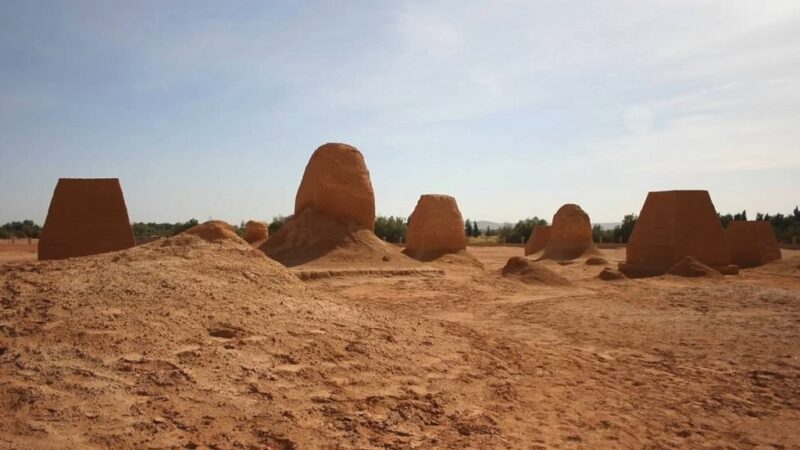
Between 2002 and 2009, researchers conducting surveys in Western Sahara identified an extensive network of ancient stone structures.
These discoveries were made in some of the most remote and politically volatile areas on the African continent.
Access is limited due to ongoing territorial disputes, sparse infrastructure, and threats to safety, all of which have restricted traditional archaeological excavation.
Despite those barriers, satellite imagery combined with on-the-ground observations has confirmed widespread evidence of prehistoric activity.
Dozens of locations, once assumed barren and uninhabitable, reveal clues about ancient groups who once thrived in these desert plains.
Structure Types and Layouts
Shapes and arrangements of the structures are diverse. Based on field reports and imaging analysis, a range of architectural patterns emerge.
Key observed forms include:
- Crescent-shaped alignments of rocks
- Full circular enclosures
- Long straight rows of stones
- Rectangular rock platforms
- Isolated and clustered stone piles
- Burial mounds (tumuli) often located within or nearby
Some complexes stretch as long as 630 meters, indicating significant labor investment. Other smaller forms seem to be stone heaps or directional markers.
Concentric circles and repeating motifs suggest the use of geometry and spatial logic.
These structural variations point to different potential purposes, possibly combining ceremonial, funerary, and practical applications.
Dating and Function
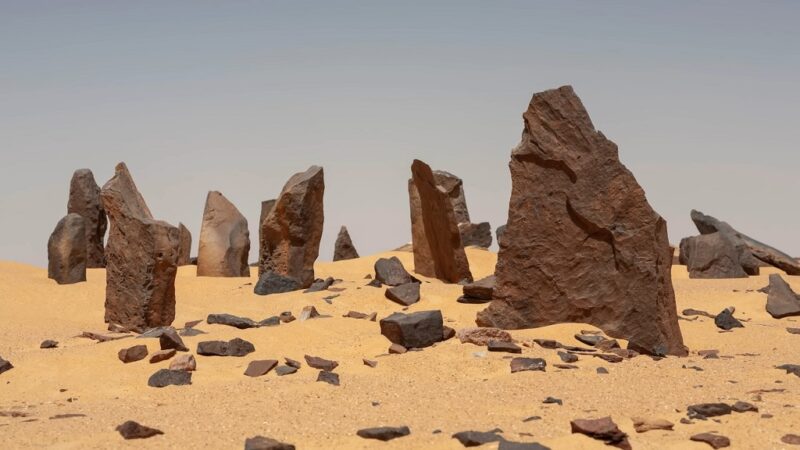
Efforts to assign chronological value to these formations face major challenges. Organic remains required for radiocarbon analysis are rarely found in the arid soil.
Only a handful of sites have produced datable materials. One such example includes human remains associated with burial mounds, estimated to be about 1,500 years old.
However, researchers argue that many of these structures are far older, likely constructed during a climatic period when the region supported vegetation, wildlife, and human settlements.
Based on environmental models and artifact distribution, some proposed interpretations have emerged. These include:
- Ritual gathering places for early communities
- Temporary or seasonal dwellings linked to pastoral activity
- Burial sites used across generations
- Territorial markers or navigational points within nomadic routes
Ongoing conflict and minimal excavation hinder more precise analysis. Research teams face logistical hurdles that make long-term studies nearly impossible.
Despite this, current findings already point to an ancient tradition of complex construction, one tied closely to changing environmental and social conditions.
Stone Circles in Northwest Arabia (AlUla and Harrat Uwayrid)
Across the volcanic plains and desert basins of northwest Arabia, hundreds of stone circles have been documented, particularly in regions like AlUla and Harrat Uwayrid.
Estimated to date back 7,000–8,000 years, these structures coincide with the Neolithic warm phase between 5,800 and 5,500 BCE.
Researchers have found them scattered across open plains, rocky highlands, and slopes of ancient lava fields. Despite inhospitable terrain today, these zones once supported thriving human settlements.
Archaeological findings suggest a radically different ecological setting during their construction, one with seasonal vegetation, water sources, and wild fauna.
Function Reinterpreted
Earlier researchers categorized these circles as sacred installations, much like how megalithic sites in Europe have been treated.
Symbolism and spiritual function were once considered primary.
However, on-site excavations transformed this interpretation. Unearthed items like hearths, food remains, stone tools, and decorative objects suggest something more familiar, human homes.
Evidence points to domestic living, not ceremonial ritual. Groups likely followed seasonal cycles, moving through the desert when conditions allowed.
Families may have returned to the same structures annually, rebuilding roofs and reusing spaces.
What was once thought of as mysterious now reveals everyday life in motion.
Items discovered during excavation include:
- Charred animal bones indicating food preparation
- Hearths constructed with stone circles for cooking
- Flint tools shaped for cutting, scraping, or hunting
- Shell beads and pierced stones used as personal ornaments
Patterns of repeated use point to a system of seasonal movement guided by water, grazing routes, and social bonds.
Rather than isolation, these groups operated in a network of settlements, returning to familiar sites throughout the year.
Construction and Architecture
Design principles behind these stone circles demonstrate thoughtful spatial planning. Builders worked with basalt stones, shaped and arranged into two concentric rings.
The layout created stable perimeters for circular dwellings. Interior sections often held large vertical stones, which may have functioned as supports for temporary roofing.
Despite minimal tools and resources, effort invested into each construction reveals a deep relationship with place and purpose.
Structures show signs of reuse and modification over time, suggesting generational knowledge and shared construction practices.
Key architectural features include:
- Double-ring layout using carefully chosen basalt stones
- Central upright stones used as posts for roof supports
- Roof coverings likely made of wood, hides, or bundled vegetation
- Entrances oriented to align with environmental features like wind or shade
Such construction reveals how people adapted to both environmental conditions and social needs. Designs balanced shelter, mobility, and practicality, showing strong coordination and shared expertise among early Arabian communities.
Mustatils and Ritual Connections
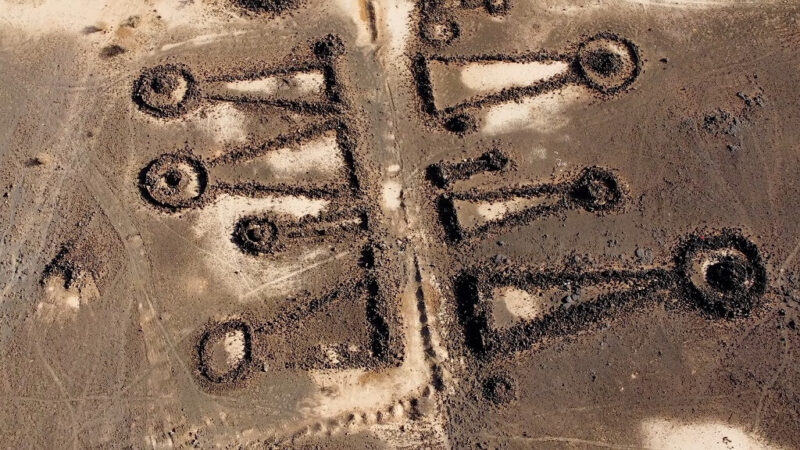
Monumental rectangular enclosures known as mustatils dominate parts of northwest Arabia and surrounding regions.
Just as medieval Europe produced vampire stories to explain disease and death, later communities may have assigned spiritual or ritual meanings to these silent stone forms.
Over 1,600 of these structures have been documented, many of them located on high ground, such as ridgelines and rocky plateaus, where they remain visible across the horizon.
Construction of mustatils required significant labor. Built with long parallel stone walls, some structures stretched over 600 meters.
Builders used locally sourced stone blocks, which were manually transported and arranged without modern tools.
Entryways often led into central courtyards, and some featured low platforms or upright stones that may have framed ceremonial activity.
Excavations conducted in selected mustatils revealed deposits of horned animal skulls, typically cattle or antelope. These finds point toward ritual practices that included animal sacrifice.
Offerings were likely part of seasonal events tied to rainfall cycles, hunting, or community gatherings. Researchers found no signs of domestic life inside, reinforcing their ceremonial role.
Patterns in design and spatial arrangement support the idea of a shared belief system. Though separated by vast distances, mustatils consistently display similar architectural styles and ceremonial components.
Key features commonly found include:
- Long rectangular layout with parallel stone walls
- Central courtyards used for ceremonial activity
- Animal skulls placed as offerings, often in clusters
- Strategic positioning on ridgelines or plateaus
- Absence of habitation debris, reinforcing ritual interpretation
Material Culture and Mobility
Movement of people, goods, and ideas across arid zones helped shape the cultural identity of early societies tied to the stone circles.
Far from being isolated tribes dwelling in forgotten deserts, these communities participated in active exchanges with neighboring regions.
Material remains found at multiple sites suggest interactions that extended across hundreds of kilometers.
Two key aspects, trade and adaptation, highlight how these groups responded to external pressures and opportunities.
Trade and Exchange
Artifacts scattered across ancient settlements point toward trade networks spanning long distances.
People living in these regions managed to secure materials and goods unavailable in their immediate surroundings, reflecting both social connections and economic complexity.
Key discoveries include:
- Red Sea shells found inland, far from any coastlines, suggest deliberate trade or movement.
- Non-local tools, such as stone implements not native to the region, were likely acquired through exchange.
- Animal remains of species not commonly found in the region point to importation or pastoral migrations.
- Jewelry and decorative objects exhibit stylistic similarities to items from the Levant, especially Jordan.
Construction methods and tools bear a resemblance to techniques used by other Neolithic cultures, hinting at shared knowledge or movement of skilled labor.
Adaptation and Legacy
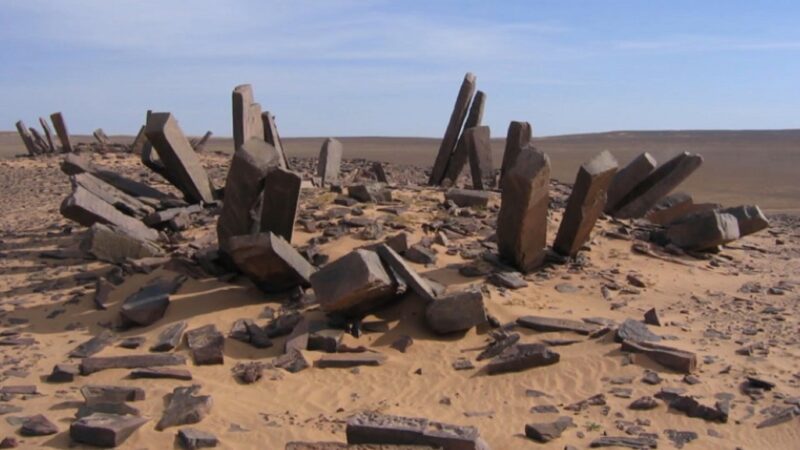
Climate played a decisive role in shaping the fate of these early groups.
Around the 5th millennium BCE, gradual desiccation transformed formerly habitable zones into inhospitable expanses.
Communities were forced to abandon their homes, ceremonial sites, and social structures in search of more viable environments. Yet abandonment did not mean forgetting.
Over time, later populations revisited and repurposed these stone formations, converting many into funerary zones.
Burial practices aligned with older architectural footprints, turning once-domestic or ceremonial structures into spiritual corridors.
Key indicators of cultural continuity include:
- Linear tomb alignments that created pathways, known today as funerary avenues.
- Use of original stone layouts to construct burial mounds or tomb enclosures.
- Continued visits and offerings were made at ancient sites long after their primary use had ended.
The Bottom Line
Stone circles of the Sahara and Arabia remain among archaeology’s most puzzling discoveries.
Initial impressions of simple cultic structures have given way to a richer narrative involving community life, seasonal adaptation, and ritual continuity.
Each circle, platform, and mustatil represents a legacy of innovation and resilience.
By studying them further, insights into early societies in dry and demanding environments continue to emerge.
Related Posts:
- The Desert Hedgehog - Tiny, Tough, and Built for Survival
- What Animal Was Used to Transport Goods Across the…
- Why Is the Eye of the Sahara Also Known as the…
- 7 Resilient Plants Found in the Sahara Desert
- Why We Must Protect the Sahara Desert Cheetah at all Costs
- 6 Unique Plants Found in the Sahara Desert - Rare…






